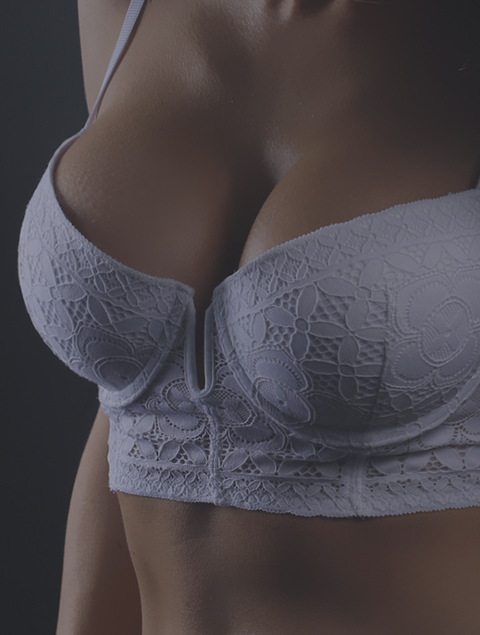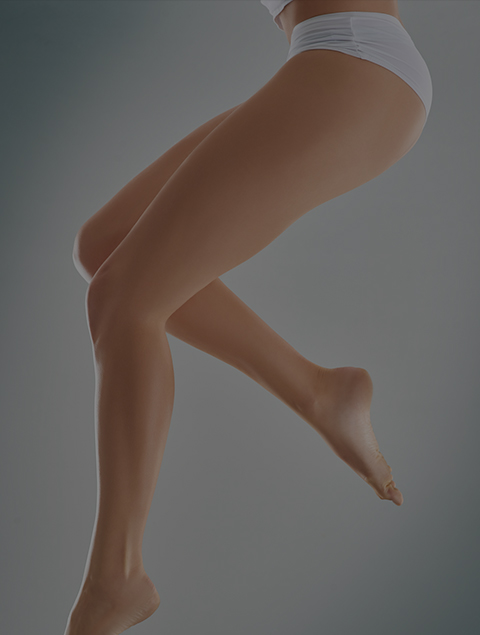Facelift

Nothing stops the march of time, and on our faces it really shows. Our altitude in Calgary and our love of everything outdoors beats up our skin. Throw in the body’s declining collagen production, and the fact that the face has some of the thinnest skin on the entire human body. That’s the perfect recipe for the development of deep creases beside the mouth, hanging jowls, sunken cheeks, loose skin and fat deposits on the neck, and an overall loose, saggy look.
A facelift with Dr. Perron can reverse this march of time, at least for a while. A facelift removes loose skin on your face and neck, tightens the underlying tissue, and removes excess fat. Facelifts can take 10 to 15 years off your face and are excellent procedures for both women and men.
How do I know if I would be a good candidate for a facelift?
It’s a simple fact of aging — just about anyone over the age of 45 could benefit from a facelift of some sort. In Calgary our outdoor lifestyles virtually guarantee that. Generally, a facelift, clinically known as rhytidectomy, rejuvenates the mid-to-lower face and neck. If you can relate to these characteristics on your face, a facelift with Dr. Perron could be a good option:
-
- You have mid-face sagging
-
- You have deep creases under your eyes
-
- You have deep nasolabial folds
-
- Jowls have formed on your jawline
-
- You have fatty, sagging areas just below your cheekbones
- You have loose skin, wrinkles, vertical cords, and fatty tissue on your neck
Does Dr. Perron use different methods for his facelifts?
The facelift is one of the original cosmetic surgeries, the first chronicled in Berlin in 1901. Up until the new century, most patients simply opted to have what would now be known as a traditional facelift. But experienced doctors such as Dr. Perron now use different methods with the goal of more natural-looking results. He uses different incision lengths and locations, depending on the patient’s individual needs. Most facelift procedures take around two hours.
Every patient is unique, and Dr. Perron tailors every procedure to the patient’s specific needs, but these are some of the facelift methods he uses.
- Traditional facelift — This is the “full” facelift for rejuvenating the face, jowls, and neck. A full facelift involves lifting and repositioning the muscles and deeper tissues and removing certain attachments. Fat is sculpted (Dr. Perron avoids removing too much fat to avoid creating a “hollow” look). Excess skin is trimmed and then re-draped. The incisions with a traditional lift start at the temples, run downward in front of the ear, wrap around the earlobe, and terminate in the hairline of the lower scalp. If the patient has particular issues in the neck area, a second incision is made under the chin to lift, tighten, and trim excess skin on the upper neck.
- Limited-incision facelift — The goals of this facelift aren’t as widespread, instead providing limited rejuvenation around the eyes and mouth, including nasolabial folds and other deep creases. Shorter incisions are made at the temples, around the ears, and if needed, in the lower eyelids and/or under the upper lip.
- Mid-face lift — As the name implies, this lift focuses on the mid-face, lifting the cheeks and removing lines. Mid-face lifts can reduce puffiness under the eyes, correct nasolabial folds, and improve the cheeks. Incisions are small, usually in the lower eyelids or mouth.
- Neck lift — While not technically a “facelift,” neck lifts are often part of these procedures. After all, who wants a renewed face, only to have a sagging neck full of neck banding? The neck lift concentrates on jowls and fat under the chin. The incision is made around the earlobe and behind the ear to the lower scalp. An incision can also be made under the chin.
What is recovery like after a facelift?
Recovering after a facelift isn’t a walk in the park, even if that park is Glenbow Ranch. This is because a facelift, as the name implies, adjusts large areas of skin and underlying muscles and support tissue. This creates tissue trauma, which leads to bruising and swelling.
After the procedure, Dr. Perron will have wrapped your face in bandages and he will likely have placed drainage tubes. There will be extensive bruising and swelling that will last from two to three weeks. The first few days are the hardest, but then you will feel better quickly. Your skin may feel tight in the face and neck. You will likely have numbness in areas, as well. This is normal and can last up to a couple months, as the facial nerves adjust to the re-draped skin. Most patients can return to work by the third week.
Patience is important with this recovery. Dr. Perron will discuss this with you. Swelling can return, especially at night, for weeks, even months. This can discourage some patients. Also, your incision locations will transition from numbness to itching. This is all normal, and is simply the progression to your final results, which you will love.
When can I get back to my normal routine after my facelift?
Recovery times vary, as you would expect. With limited incision methods, you can return to work in just a few days. With any facelift you need to try and minimize increasing blood pressure to the face. This includes strenuous exercise, lifting of any moderate amount of weight, and even sex. All of these things need to wait probably for about one month. You will also need to avoid using blow dryers, and avoid steam rooms and saunas for two months.
I’m considering fillers instead of surgery. How long does a facelift last compared to fillers?
Facelifts make permanent changes that endure. Of course, you will still age, but your face will age from a place that is 10-15 years younger than it was before your facelift. To keep up with the aging process, many of Dr. Perron’s patients opt for a smaller procedure in five to 10 years.
Dermal fillers can provide a “liquid facelift,” although the changes are not as dramatic. Still, if you want to avoid surgery, this is an option. Dermal fillers last about one year in most cases. To maintain your results, you’ll need to have another injection session at that point.
What will my scarring be like from my facelift?
Dr. Perron uses his extensive experience and knowledge of facial anatomy to hide your incision in the hairline and behind the ears. Initially, these scars will be pink, but after a few months they will gradually turn white and become far less noticeable.
What are the risks involved with a facelift?
Of course, all of the risks that accompany any surgery apply to facelift surgery, but there are some specific potential side effects:
-
- Injury to the nerves that control facial muscles (usually temporary)
-
- Numbness or tingling around the incision areas (temporary)
-
- Hair loss at the incision sites
-
- Skin discoloration (rare but can continue for several months)
- Skin healing issues (more common with smokers)



